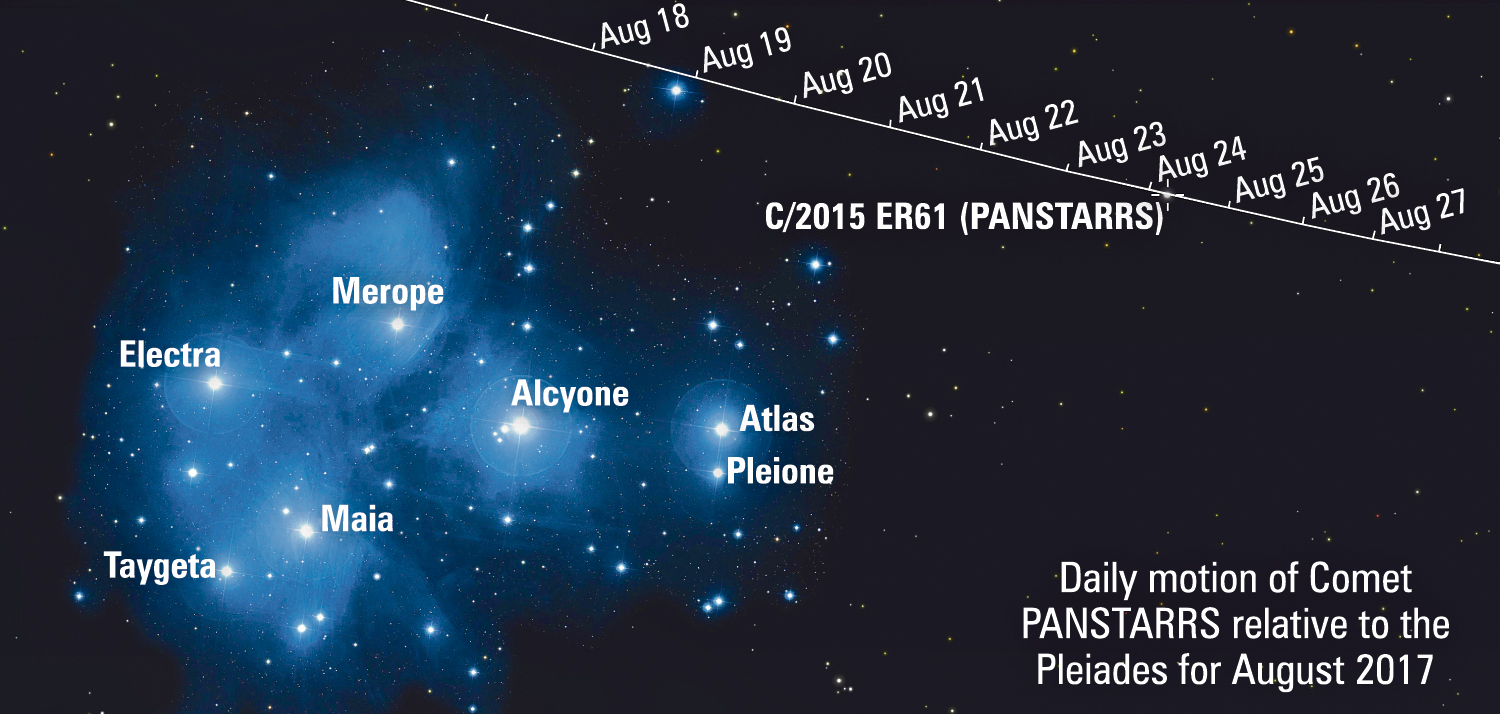
I write this column in order to bring (what I hope are) interesting celestial phenomena to your attention. Usually I choose subjects on the basis of their being relatively easy to see without needing to resort to optical aids.
However, to have any chance of spotting this week's target you will definitely need binoculars (or better still a telescope).
You will also have to get up well before dawn and find a viewing spot with an unobstructed view of the northern sky which is well away from sources of artificial light.
These extensive preparations are required because we are going comet-hunting! But don't despair; even if you miss the comet, you will have an excellent chance to explore the wonders of the Pleiades, a beautiful star cluster (better known as Matariki to Maori).
Our prey is a faint, but very interesting, comet which rejoices in the name C/2015 ER61 (Pan-Starrs). It was discovered in March 2015, by the Panoramic Survey Telescope and Rapid Response System (Pan-Starrs) telescope located at Haleakala Observatory in Hawaii.
The comet last visited the inner solar system more than 15,000 years ago, and if you fail to spot it during this apparition, it will be another 9000 years before it returns to these parts.
Astronomers believe that at the heart of the comet is an icy ball of rock (called its nucleus) which may be almost 20km across.
While the comet is dim, it is very conveniently located quite close to the Pleiades, which can be spotted roughly 20deg above the northern horizon at 5.30am.
To find Pan-Starrs C/2015 ERG1 using a pair of binoculars, first locate the two bright stars Atlas and Pleione on the eastern side of the Pleiades.
Then slowly scan upwards in the sky until you reach the predicted position of the comet. Because the comet is relatively close to Earth and moving round the sun, its position changes slowly from one night to the next.
Look carefully for a dim fuzzy patch of light; do let me know if you find it!












